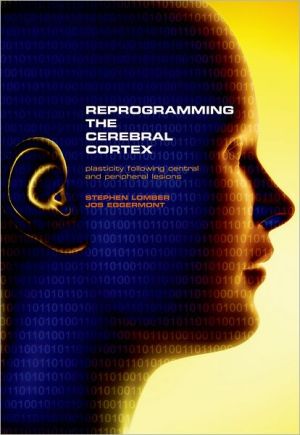Reprogramming the Cerebral Cortex: Plasticity Following Central and Peripheral Lesions
The brain has a remarkable ability to adapt in the event of damage - in many cases shifting responsibility for specific cognitive functions to other non-damaged brain regions. This 'plasticity' can be crucial in aiding recovery from stroke, trauma, and peripheral damage such as eye or ear damage. Over the past thirty years our view of cortical plasticity has evolved greatly. Early studies suggested that changes to cortical function due to peripheral lesions could only occur during development, and that these plastic changes were specific to a particular temporal window or 'critical period'. Over time, it has been demonstrated that cortical modifications as a consequence of either peripheral or central lesions can induce adaptive, or beneficial changes in cortical function in an effort to preserve or enhance function. More recently, studies have identified that many of these adaptive changes, once thought only possible in the developing brain, are also possible in the mature or developed brain. At present, many laboratories are defining the beneficial capabilities of cerebral cortex plasticity, upon which many proactive and therapeutic strategies may be developed in order to maximize the 'reprogramming' capabilities of the cerebrum.
Reprogramming the Cerebral Cortex describes these exciting studies and examines adaptive cortical plasticity in a variety of systems [visual, auditory, somatomotor, cross-modal, language, and cognition]. The book leads the reader through the complexities and possibilities of neuroplasticity, and presents insights into current and future research and clinical practice. It is unique in looking at the beneficial capabilities of cerebral cortex plasticity,upon which many proactive and therapeutic strategies may be developed.
Doody Review Services
Reviewer:Christopher J. Graver, PhD(Madigan Army Medical Center)
Description:Case studies describing damage to the human brain and the behavioral consequences abound. Until recently, it was thought that the brain was a static structure to which damage was permanent. In recent years, however, evidence has been emerging that suggest that the brain is far more adaptable than previously imagined, even in adults. This book delves into the topic of plasticity in the cerebral cortex.
Purpose:The main purpose is to present an extensive review of the literature on this exciting topic. This includes evidence from human and animal studies in a variety of modalities (e.g., TMS, fMRI, electrophysiology). A secondary aim is to provide a platform upon which rehabilitation targets and techniques can be refined.
Audience:The intended audience is clearly one with a neuroscience background. It is mainly geared towards bench scientists with only a thin veil of clinical pretense. An intimate knowledge of the central nervous system and neuroscience terminology is assumed. The authors have relevant knowledge and research experience.
Features:In general, the book contains an abundance of information and the section on cross-modal plasticity is especially intriguing. It is filled with figures and color plates that are instructive, but they are very specific to the neuroscience field and require familiarity with this type of presentation to fully comprehend them. Unfortunately, when including such detailed information, some chapters overlap and occupy space that might have otherwise been filled with a more comprehensive view of plasticity (e.g., including information about the prefrontal cortex, hippocampus, etc.). Some chapters also have summaries that do not seem to recapitulate the content at all. Thankfully, the final chapter mentions the critical step of understanding brain-behavior relationships, but the book otherwise never addresses this issue.
Assessment:This book is full of useful and intriguing information that is primarily geared towards the basic sciences, as opposed to applied sciences. It provides a good foundation for neuroscience researchers and students embarking on cortical plasticity endeavors. Nevertheless, a discussion of plasticity in the brain as a whole would make this a more complete book and the inclusion of brain-behavior relationships may broaden its appeal.
Neuroscience, Neurology, Physiology - Nervous System, Neuroanatomy, Pathophysiology, Neurophysiology
| Name in long format: | Reprogramming the Cerebral Cortex: Plasticity Following Central and Peripheral Lesions |
|---|---|
| ISBN-10: | 019852899X |
| ISBN-13: | 9780198528999 |
| Book pages: | 456 |
| Book language: | en |
| Edition: | 1 |
| Binding: | Hardcover |
| Publisher: | Oxford University Press |
| Dimensions: | Height: 6.6 Inches, Length: 9.8 Inches, Width: 1.3 Inches |
















